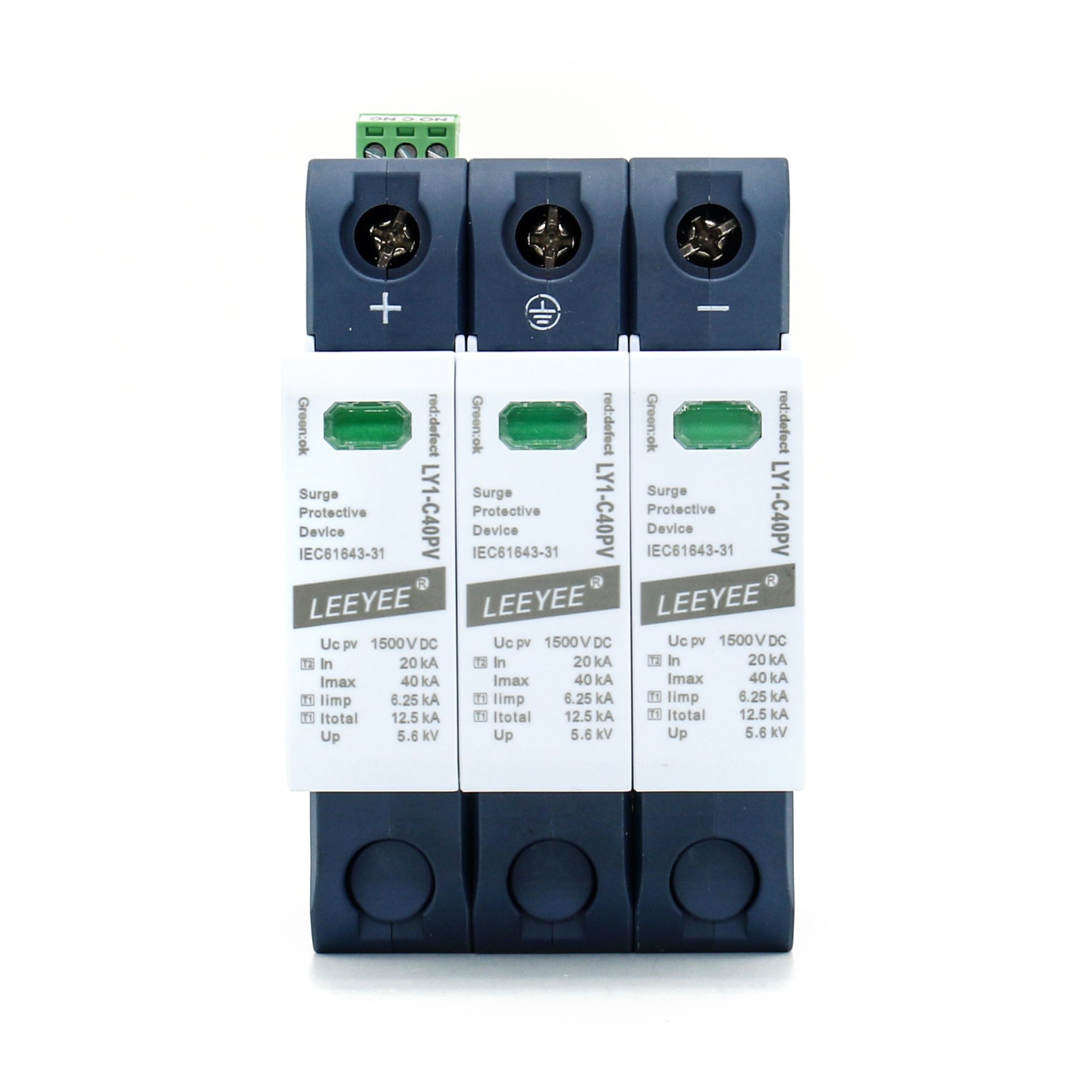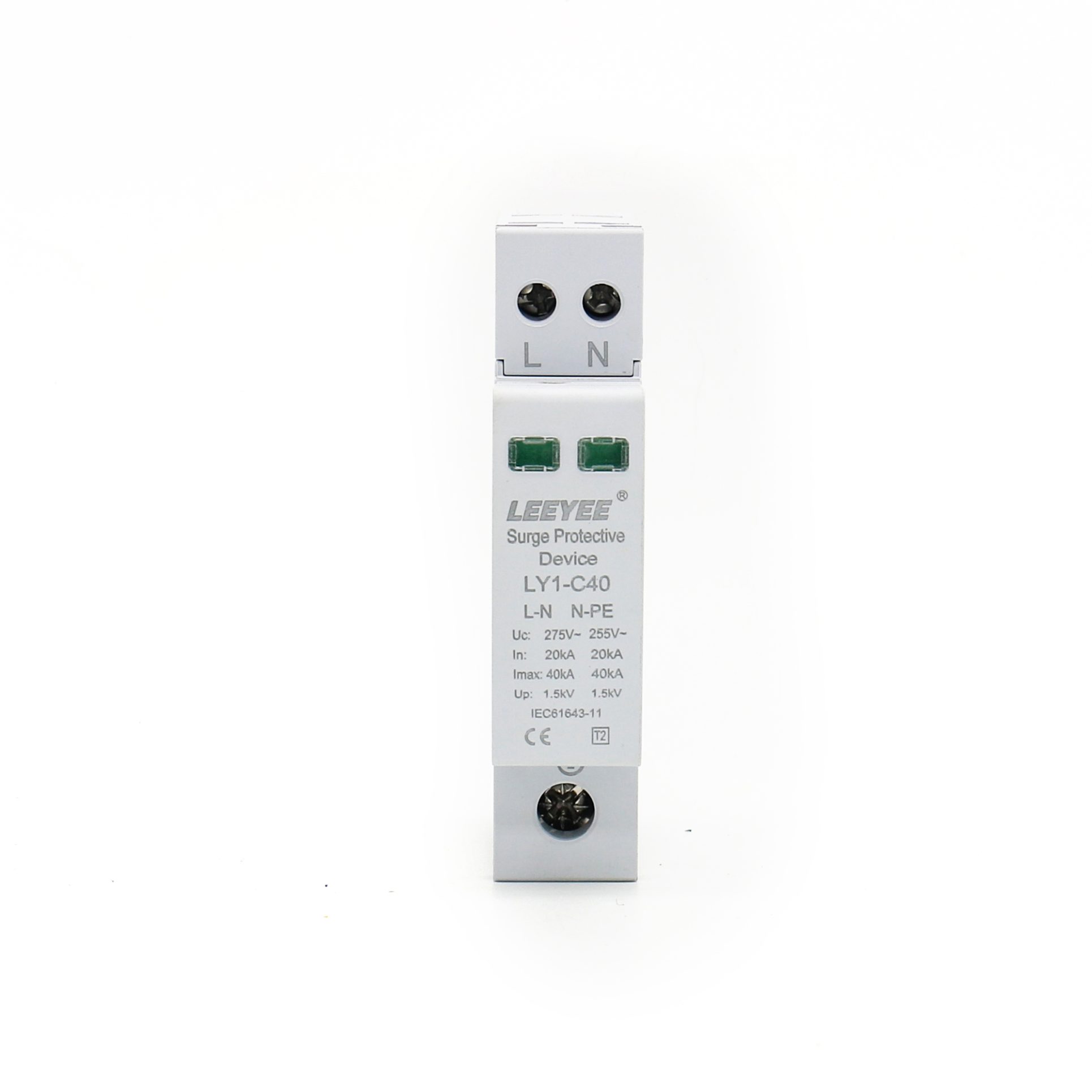Table of Contents
I. Understanding Surge Protective Devices (SPD)
1.1 Definition and Working Principle of SPD
Surge Protective Devices (SPD) are indispensable components in modern electrical systems, designed to protect sensitive electronic equipment from damage caused by voltage surges. Voltage surges, which are instantaneous increases in voltage, can result from lightning strikes, power system switching, or other electrical faults. Although their duration is brief, the energy involved can be immense, capable of causing irreversible damage to electronic devices. SPD provides a low-impedance path to divert these high-energy surge currents to the ground, thereby safeguarding connected equipment. For instance, according to International Electrotechnical Commission (IEC) standards, SPD can limit voltage surges to levels that devices can withstand, typically not exceeding 2.5kV. In practical applications, the response time of SPD must be fast enough to ensure that it diverts the surge before it reaches sensitive equipment. For example, some high-quality SPDs can achieve response times in the nanosecond range. Therefore, selecting the appropriate SPD requires consideration of its technical parameters in conjunction with the specific needs of the electrical system to ensure effective protection at critical moments.
1.2 Main Types of SPD and Application Scenarios
When choosing a surge protective device (SPD), understanding its main types and application scenarios is crucial. SPDs are primarily classified into three categories:
- Voltage Switching SPD: Suitable for high-voltage systems, such as power transmission lines, characterized by fast response times that effectively prevent high-energy surges from damaging equipment.
- Voltage Limiting SPD: Widely used in low-voltage distribution systems, such as residential and commercial buildings, which protect sensitive electronic devices by limiting voltage peaks.
- Combined SPD: This type integrates the characteristics of both previous types and is suitable for applications requiring simultaneous voltage limiting and fast response. For instance, in hospitals and data centers, combined SPDs ensure the continuous operation of critical equipment during lightning strikes or power system failures.
According to IEC standards, the selection of SPD should be based on an assessment of the electrical system’s sensitivity and the determination of the required protection level to ensure safe operation in the worst-case scenarios. For example, a case study involving a hospital demonstrated that proper installation of voltage limiting SPDs reduced equipment failure rates due to power surges by more than 70%, significantly enhancing the reliability of medical devices and patient safety.
II. Determining Protection Needs
2.1 Assessing Electrical System Sensitivity
Evaluating the sensitivity of the electrical system is a crucial first step in selecting SPD. The sensitivity of an electrical system typically depends on the voltage withstand capability of its internal components and their vulnerability to transient overvoltages. For example, precision electronic devices and automated control systems are often highly sensitive to voltage fluctuations, while traditional lighting and power systems are relatively more tolerant. According to IEEE standards, the sensitivity of electrical systems can be categorized into several levels, ranging from low sensitivity for motors and transformers to high sensitivity for computers and communication devices.
In a practical scenario, a data center experienced significant data loss and equipment damage amounting to millions of dollars due to voltage surges caused by lightning strikes before the installation of SPDs. Therefore, through sensitivity assessment, one can determine the degree of surge protection needed for the electrical system, which helps in selecting the appropriate type and configuration of SPD to ensure stable operation and minimize potential economic losses.
2.2 Determining Protection Levels and Standards
Determining protection levels and standards is a crucial step when selecting SPD. Protection levels are usually defined by IEC standards, such as the IEC 61643 series, which provides clear classification of protection levels for different types of electrical systems. For instance, residential buildings may only require lower protection levels, while critical infrastructures like industrial facilities or hospitals necessitate higher levels of protection to ensure continuous operation and personnel safety.
Case studies have shown that correctly selecting protection levels can significantly reduce equipment damage and data loss due to lightning strikes or power system failures. For example, a chemical plant that installed SPDs compliant with IEC 61643-11 standards saw a 70% reduction in failure rates of critical equipment, validating the importance of selecting appropriate protection levels. Additionally, adherence to national standards such as UL 1449 in the United States or EN 61643 in Europe ensures that SPD devices not only meet international standards but also comply with local regulatory requirements, providing comprehensive protection for electrical systems.
III. Choosing the Right Type of SPD
3.1 Selecting SPD Based on Electrical System Characteristics
When selecting a surge protective device (SPD), it is essential to thoroughly understand the characteristics of the electrical system to ensure that the chosen device can provide adequate protection. For example, for a highly sensitive electronic equipment system, such as medical imaging devices in hospitals or servers in data centers, selecting an SPD with a high protection level is crucial. These systems typically require SPDs to have a low Voltage Protection Level (VPL) to prevent minor voltage fluctuations from damaging equipment. According to IEC 61643-11 standards, the voltage protection level of the SPD should be lower than the maximum voltage peak that the electrical system can withstand to ensure safe operation.
In practical applications, for example, the electrical system of a chemical plant may face frequent surges and voltage fluctuations, necessitating the selection of SPDs capable of withstanding high-energy impacts. When making this choice, one should consider the SPD’s Nominal Discharge Current (In) and Maximum Discharge Current (Imax) to ensure it can handle the expected maximum surge currents. For instance, if the electrical system of the chemical plant frequently experiences surges due to lightning strikes, the SPD’s Imax value should at least match the anticipated maximum surge current to ensure protection under extreme conditions.
Moreover, considerations regarding the layout of the electrical system and environmental factors are also vital when selecting SPDs. For example, SPDs installed outdoors need to have higher protection ratings to withstand adverse weather and environmental corrosion. In certain scenarios, such as offshore oil platforms, SPDs must not only possess high protection ratings but also be resistant to corrosion and high temperatures. By analyzing the specific needs of the electrical system in conjunction with the technical parameters and performance metrics of SPDs, informed choices can be made to ensure the long-term stability and safety of the electrical system.
3.2 Understanding the Characteristics and Application Scope of Different SPD Types
When selecting surge protective devices (SPDs), understanding the characteristics and application scope of different SPD types is crucial. For example, Voltage Switching SPDs (Type 1) are typically used for direct lightning protection and can withstand high-energy surge currents. They are suitable for installation at the entrance of buildings to protect the entire electrical system from direct lightning damage. According to IEC 61643-11 standards, the Nominal Discharge Current (In) of Type 1 SPDs usually ranges from 10 kA to 120 kA.
On the other hand, Voltage Limiting SPDs (Type 2) are used for indirect lightning protection. Their characteristics include rapid response times and the ability to limit overvoltages to lower levels, making them suitable for protecting internal circuits. The In value for Type 2 SPDs typically ranges from 5 kA to 40 kA. In practical applications, such as the electrical system of an industrial facility, due to its higher sensitivity to surge currents, Type 2 SPDs are selected as secondary protection to ensure sensitive equipment such as computer control systems are not damaged.
Additionally, Hybrid SPDs combine the features of Type 1 and Type 2 SPDs, making them suitable for scenarios that require a higher level of protection. In terms of economic analysis, although Hybrid SPDs have a higher initial investment, their long-term benefits lie in reducing downtime and repair costs resulting from equipment damage. Therefore, when selecting SPDs, it is essential to comprehensively consider the characteristics of the electrical system, protection needs, and cost-effectiveness to ensure the most suitable type of SPD is chosen.
IV. Considering Technical Parameters of SPD
4.1 Maximum Continuous Operating Voltage (Uc)
When selecting a surge protective device (SPD), the Maximum Continuous Operating Voltage (Uc) is a key parameter that determines its applicability. Uc refers to the maximum voltage value that an SPD can endure over an extended period without sustaining damage. In practical applications, Uc must be higher than the maximum voltage during normal operation of the system to ensure that the SPD does not activate unnecessarily under normal working conditions. For instance, for an AC electrical system rated at 230V, the ideal SPD should have a Uc value above 230V to avoid unnecessary protective actions during voltage fluctuations. According to IEC standards, the Uc value of SPD is typically set to be 10% to 20% higher than the system rated voltage to provide an extra safety margin.
In terms of economic analysis, selecting an SPD with an appropriate Uc value can balance initial investment and long-term benefits, avoiding additional costs arising from frequent replacements or maintenance. For example, a case study involving industrial electrical systems indicated that choosing an SPD with a Uc value that was too low resulted in frequent protective actions and increased maintenance costs, while appropriately increasing the Uc value led to significant improvements in system stability and long-term maintenance cost reductions.
4.2 Nominal Discharge Current (In) and Maximum Discharge Current (Imax)
When selecting a surge protective device (SPD), the Nominal Discharge Current (In) and Maximum Discharge Current (Imax) are two crucial technical parameters directly related to the device’s performance and protection effectiveness. The Nominal Discharge Current (In) refers to the maximum continuous current that the SPD can handle, while the Maximum Discharge Current (Imax) represents the maximum current peak that the SPD can withstand during a single surge event. For example, if an SPD has an In value of 20 kA, it means it can continuously handle currents up to 20,000 amperes, while an Imax value of 40 kA indicates it can cope with current peaks of up to 40,000 amperes.
In practical applications, these parameters must align with the specific needs of the electrical system. For instance, an industrial facility may require SPDs with higher In and Imax values to cope with frequent high-energy surges, whereas a residential or small commercial environment might need lower In and Imax values. When selecting SPDs, it is advisable to refer to IEC 61643-11 standards, which provide clear guidance on SPD performance and testing. Additionally, case studies demonstrate that correctly selecting SPDs with appropriate In and Imax values can significantly reduce equipment damage and production losses caused by lightning strikes or power system failures. As Benjamin Franklin famously said, “An ounce of prevention is worth a pound of cure.” In the context of SPD selection, accurately matching In and Imax values can effectively prevent damage to electrical systems.
Summary
This article is the first part of the “Comprehensive Guide to Choosing Surge Protective Devices (SPD),” which delves into the fundamental concepts of surge protective devices and their significance in electrical systems. Firstly, it introduces the definition and working principle of SPD, highlighting its role in providing a low-impedance path to protect sensitive electronic equipment from voltage surges.Next, the article categorizes the main types of SPD, including Voltage Switching SPD, Voltage Limiting SPD, and Combined SPD, while analyzing their respective application scenarios.
In determining protection needs, assessing the sensitivity of the electrical system is crucial, as different devices have varying tolerances to voltage fluctuations. Additionally, selecting the appropriate protection level and ensuring compliance with international and national standards for SPD are emphasized as vital steps in safeguarding equipment.
In summary, choosing the right SPD requires a comprehensive consideration of the characteristics of the electrical system, sensitivity assessment, and protection standards. The subsequent parts will continue to discuss how to select the appropriate SPD type and its technical parameters, helping readers gain a more thorough understanding and application of SPD to ensure the safety and stability of electrical systems.


